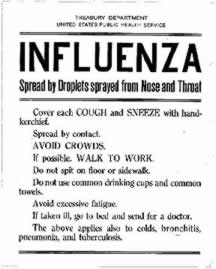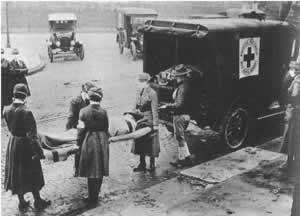 |
 |
|
|
|
Pandemic Threats: swine flu and bird flu
Currently, the so-called "swine flu" or H1N1, and the evolving "avian flu" or H5N1, pose a significant threat to social well being and may have very serious business impact consequences especially during the present era of economic uncertainties. While there have been many pandemic disease episodes
over the ages, there have been three notable "influenza" events in
more recent times, in 1918, 1957, and 1968. In contrast to the so-called
"seasonal" flu, the pandemic sub-types in 1957 (the "Asian Flu")
and 1968 (the "Hong Kong Flu") caused a significant increase in flu-related
sickness and death.
However,
the event in 1918, known as the "Spanish Flu," was a very
virulent strain of the H1N1 sub-type causing a vary high rate of
sickness
and a very high mortality rate. The current H1N1 sub-type virus has many characteristics similar to those of the Spanish Flu virus. Should the current H1N1 evolve into a more severe disease, similar in scope to the Spanish Flu, there will be very material social and economic impact, worldwide. It behooves governments, municipalities, businesses, families, and individuals to plan accordingly. There are many resources to help better understand the behaviors of pandemic diseases. The U.S. Department of Health and Human Services along with the Centers for Disease Control, as well as respective state Departments of Health have made available many resources.
Fact Sheets: What is an Influenza Pandemic? Business checklist
|
|||||||||||||||||||||||||||||||||||||||||||
|
 IRI helps
corporations evaluate conditions and contingencies associated with
increasing threats of pandemic diseases including influenza.
IRI helps
corporations evaluate conditions and contingencies associated with
increasing threats of pandemic diseases including influenza. 
 IRI has
worked with many corporations with respect to business continuity
planning. The "flu" component is a subset that necessarily needs
to be addressed.
IRI has
worked with many corporations with respect to business continuity
planning. The "flu" component is a subset that necessarily needs
to be addressed.